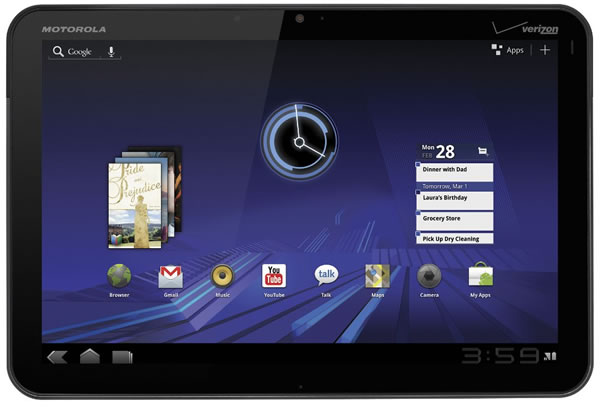Last year promised to be the year of the tablet, and at least for Apple, it was. The nearly ubiquitous iPad managed not only to outsell every other tablet on the market by a wide margin, it also exceeded Mac sales in Q4 with a record 7.33 million units moved. But even if Apple is not likely to lose its throne anytime soon, competition is finally making itself present. If Android's smartphone gains serve any indication this should be an interesting year for tablets as well.
Rivals such as Motorola and LG are coming on strong with the first Android "Honeycomb" tablets, while Research In Motion is launching the PlayBook using a completely reworked operating system based on QNX Neutrino. HP will start to see the fruits of its Palm acquisition when it launches the TouchPad, the first webOS-based tablet, this summer.
We've compiled a comparative table with what we consider are the hottest tablets either currently available or announced so far. Note that we've only included those models that are expected to be released in the next few months and the reason for that is two-fold: their specs are official or at least somewhat reliable, and because we've seen a lot of teaser products that in the end don't even make it to market -- which happened a lot last year.
Apple's iPad remains one of the best options out there, largely due to its relatively mature ecosystem and overall polished operating system. With the iPad 2 hitting store shelves in March, the first-generation model now starts at a tempting $400, while the latest and greatest takes the $500 price point sporting a slimmer design, a faster dual-core A5 processor with up to 9 times faster graphics processing, and rear and front facing cameras.
Then there is the army of Android tablets of which the Motorola Xoom, Samsung Galaxy Tab 2, LG G-Slate and Notion Ink Adam particularly stand out. The Xoom will mark the arrival of Honeycomb, Google's tablet-specific variant of Android, will come packed with very powerful hardware and an array of optional accessories to expand its capabilities.
LG's beautifully designed G-Slate carries mostly similar specs, albeit with a smaller display, but it also offers stereoscopic 3D content viewing and recording. Meanwhile, the long-awaited Notion Ink Adam takes a different approach by incorporating the innovative PixelQi display, which provides E-ink-like readability outdoors and improved battery life. The Adam won't be shipping with Honeycomb, but it uses a heavily optimized software interface called Eden UI.
In our opinion Windows tablets simply cannot provide the same level of experience as their iOS and Android counterparts, but we decided to include one model in our list to represent the platform. The Asus Eee Slate EP121 offers perhaps the most powerful hardware of the bunch and some interesting features to boot -- including a Wacom digitizer for pen input and a bundled Bluetooth keyboard. It's going to be a heavy alternative and will likely suffer from poor battery life.
Lastly, it will be interesting to see the BlackBerry PlayBook and HP's TouchPad compete in the tablet market. From what we've seen so far both will bring fresh and beautiful UIs to the game, and webOS in particular is considered to have a very robust multitask implementation, but neither company has had much luck with third-party developers.
There will be quite a few more tablet releases down the road. Those who decide to wait and see how the market plays out can expect devices from HTC, Lenovo, MSI, Samsung, Toshiba, Vizio and many other lesser-known manufacturers. The HTC Flyer, Samsung Galaxy Tab 2 and Toshiba's unnamed tablet will probably garner significant attention, not to mention the potential arrival of a number of CES prototypes like the Acer Iconia, Asus Eee Slider, and Lenovo LePad.
Subscribe to:
Post Comments (Atom)



0 comments:
Post a Comment